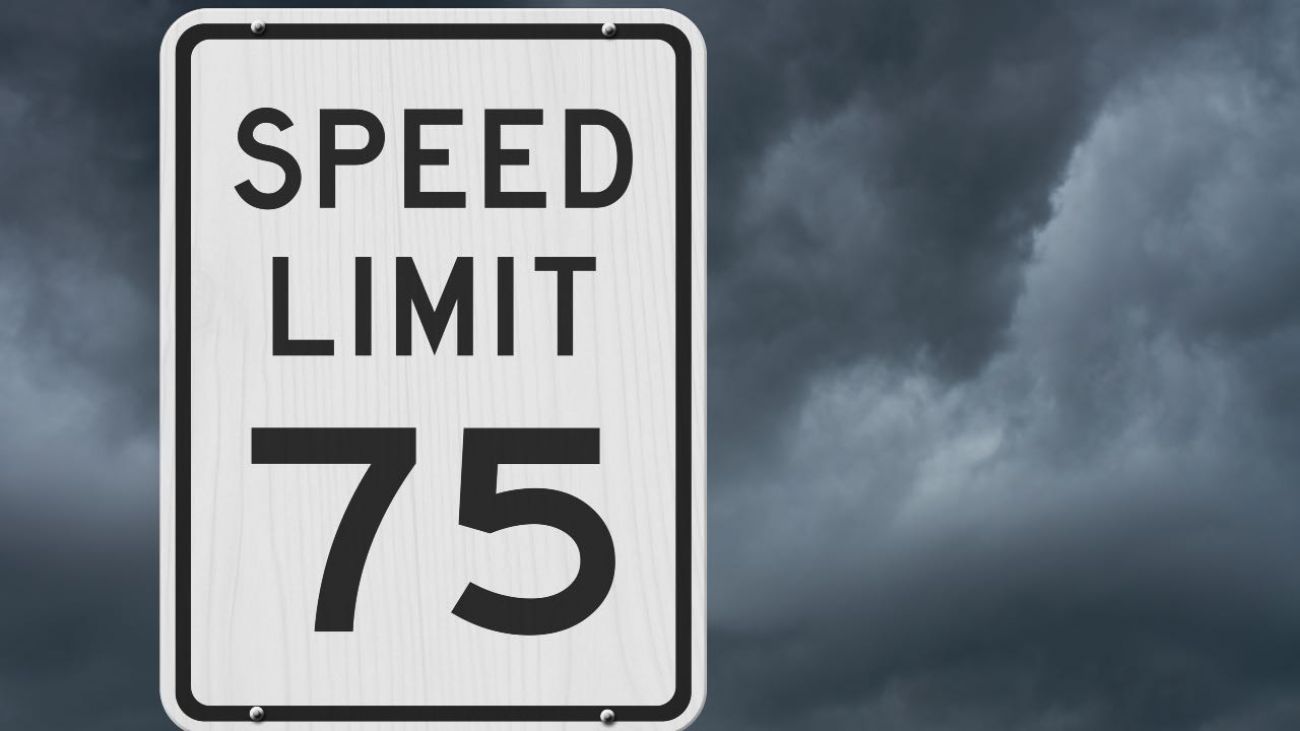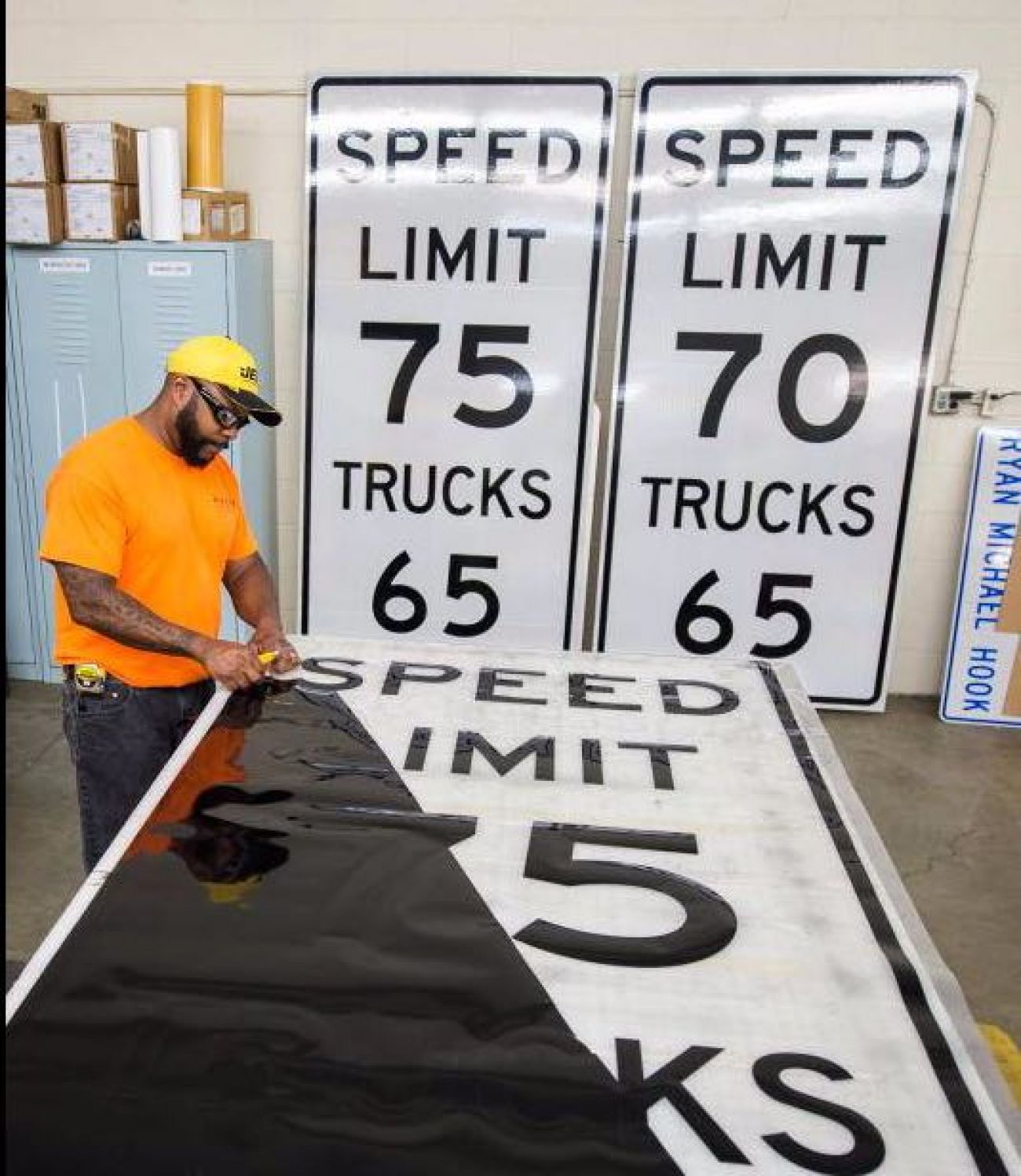Crashes, injuries spike after Michigan boosts freeway speed limits to 75 mph

ITHACA – For Connor Learman, Michigan's 75 miles per hour speed limit on US-127 allows him to shave a few minutes off his weekend snowboarding trip up north and all but eliminates the risk he’ll get pulled over by police.
"I go 80 anyways, so it gets me closer," the 22-year-old from Ann Arbor said in Ithaca, during a quick rest stop en route to Boyne Mountain in northern Michigan.
But for Darlene Hoepper of Durand, who still sets her cruise control at 70 mph more than a year after the limit was raised by 5 mph, the new law makes her Friday drive to gamble at the Soaring Eagle Casino in Mount Pleasant feel like a risky bet.
"It's too fast," the 60-year-old said. "I'm an old lady, and I don't like people buzzing by me at 80 mph or 85 mph."
Michigan's 2017 law that raised speed limits from 70 mph to 75 mph on 614 miles of rural freeways is alternately loved and loathed by motorists, who are collectively off to a fast start on the newly designated portions of Interstate 69, I-75, US-10, US-31, US-131 and US-127.
State records show average speeds have increased 2 mph and more drivers are going over 80 mph, while crashes, injuries and fatalities increased at a higher rate on the freeways than other roads in 2018, the first full year after higher speed limits were posted.
Still, the worst fears of many critics failed to materialize because Michigan officials tasked with raising speed limits did so only after selecting the safest freeways in the state, the first in the Great Lakes region to go higher than 70 mph.
While traffic safety experts warn against drawing broad conclusions from a single year of data, many experts said the science of speed is well established after decades of academic and industry research.
“When speed limits go down, traffic deaths go down. When speed limits go up, deaths go up,” said Russ Rader, senior vice president at the Insurance Institute for Highway Safety, an industry funded group that studies ways to reduce crashes and improve road safety.
Police did not identify speed as a primary factor in any of the 14 fatal crashes on 75 mph freeways in 2018, the highest number in five years. But experts warn that faster speeds increase the likelihood of such crashes – and their severity – because drivers have less time to make life-or-death decisions as they hurtle down freeways.
Case in point, a December 2018 crash on Interstate 69 witnessed by Zack Little of Laingsburg, who was traveling behind a 2007 Pontiac Montana that he saw flip at least three times near Clayton Township in Genesee County. When he rushed to the vehicle, Little immediately knew the driver would not survive.
“Besides looking at his head and seeing that it looked like a crushed hacky sack, there was blood everywhere,” said Little, now 25.
Police attributed the crash to careless driving by the 60-year-old motorist. Witnesses said the driver was passing slower cars in the 75 mph zone when he merged into the right lane, saw it was occupied by another car, suddenly veered left to avoid a crash and caused his car to roll over.
The driver, who was taken directly to the morgue, was not wearing a seat belt, according to a crash scene investigator. But would he have flipped his car if he had an extra second to check his blind spot? Little doesn't know, and he doesn't think the new speed limit law has significantly jeopardized public safety. “But after the accident, I could definitely argue about it,” he said.
Selected for speed
The law, Public Act 445 of 2016, tasked the Michigan Department of Transportation and Michigan State Police with raising speed limits to 75 mph on at least 600 miles of rural freeways and to 65 on at least 900 miles of other highways. The 1,557 miles they selected amounted to about 16 percent of total state freeway miles in Michigan.
After then-Gov. Rick Snyder signed the bill, state traffic experts set out to try to minimize the impact by identifying the straightest and safest freeways on which to raise speeds. They studied crash histories, roadway geometry, traffic volumes and more.
“Obviously when we were selecting the legislatively required 600 miles, we wanted to pick ones that were really the lowest of the low-hanging fruit from a risk perspective,” said Brad Wieferich, director of MDOT’s Bureau of Development.
Most of the selected freeways were already designed to accommodate speeds of roughly 5 mph over the posted limit, which matched the required increase, Wieferich said. And many drivers were already traveling at or about 75 mph on those roads, according to Lt. Lance Cook, head of the Michigan State Police traffic crash reconstruction unit.
“What we found is that if the number on the sign is artificially low, the drivers aren’t going to obey it and you can actually make traffic more dangerous by putting groups in conflict with each other,” Cook said.
Supporters of the legislation, which cleared the House and Senate in narrow but bipartisan votes after an earlier push for 80 mph stalled, argued drivers were already traveling at speeds they felt safe and would continue to do so after limits were raised. But researchers predicted higher limits would lead to some speed increase. And early data suggest they have.
The Michigan Department of Transportation routinely collects speed data at automated counting stations across the state, and a Bridge Magazine analysis indicates speeds consistently rose at sites that went to 75 mph.
One day in June 2018, for instance, on a stretch of US-131 in Montcalm County in west Michigan the average motorist was traveling 76.9 mph, up from 74.6 mph in 2016. Roughly 40 percent of drivers were speeding at more than 80 mph, up from 10 percent two years prior.
“Greater speed automatically provides greater risk,” Wieferich said.
“The cars are way better than they used to be — better braking, better handling, better from an overall safety perspective. But at the end of the day, it’s still physics. Speed is distance over time… and with everyone on their cellphone that I see on the freeways, I would bet that our reaction times are worse.”
Speed increases were modest on some of the freeways. At a count station on U.S. 127 in Roscommon County, the average motorist travelled 75.4 mph on one day last July, up slightly from the 73.3 mph average in 2017. But nearly half of all drivers — 49 percent — were going more than 80 mph in 2019, up from 38 percent two years earlier.
“The biggest thing was people were concerned that if you gave them another 5 [mph], they were going to take another 10 [mph],” said former state Rep. Bradford Jacobsen, an Oxford Republican who sponsored the 75 mph speed limit law. “And that just hasn’t happened.”
While he’s no longer serving in the Legislature, Jacobsen said he is still asked about the new law almost daily by colleagues, friends and other motorists.
“For the most part, they’re appreciative,” he said. “They can get up to their cabin in the U.P. in 40 minutes less than they used to. I think that’s the general consensus.”
Crashes up, jury out
Roscommon County Sheriff Ed Stern said he “didn’t know what to expect” when the state raised freeway speeds on I-75 and US-127.
He hasn’t personally noticed an increase in crashes, but “any time when there is an accident, the severity of the damage and injuries has increased, in my mind,” Stern said.
Crash records analyzed by Bridge paint a complicated picture of the early safety impact on freeways where speed limits were increased to 75 mph in May 2017.
- Crashes jumped to 4,264 in 2018 on those freeways, the most in five years and up 17 percent from the annual average of 3,637 from 2014 to 2016.
- Of the 2018 crashes, 589 involved an injury, the highest in five years and up 19 percent from the average from 2014 to 2016, while there were 14 crashes in which at least one person died, up from an average of 11 over the same period.
- By comparison, crashes rose just 3 percent on all Michigan roadways over the same span, while the number of crashes in which there was an injury or fatality rose roughly 1 percent.
But because the stretches selected for 75 mph speeds are largely rural, lightly traveled and safer than most, crashes and fatalities on those freeways accounted for only a small fraction of the statewide total.
There were more total crashes (7,520) and fatal crashes (24) on the 273 miles of I-94 than on the entire 614 miles of freeway that went to 75 mph.
“Those fearmongers out there who thought everybody was going to die, it certainly has not proven true,” Jacobsen said.
In an initial finding that contradicts past research on speed limit increases, there was no increase in the number of crashes where the responding police officer believed there was at least one “severe” injury short of death.
The 55 crashes that fit that description in 2018 equaled the average from 2014-16.
The state is waiting to assess the impact of the new speed limits until it has at least three years of crash data. Michigan State University professor Timothy Gates, a highway design and traffic engineering expert, is helping conduct a long-term study for MDOT. In a recent department podcast, Gates confirmed drivers are now going faster – 2 mph on 75 mph freeways and 3-4 mph on 65 mph highways – but said it’s too soon to evaluate crash data.
“One year, even two years, is such a small snippet of time, and there’s a lot of factors that go into crash rates, even things you wouldn’t think about, like the economy,” Wieferich told Bridge. “People may be more likely to take more personal risks in a better economy than they do when things are slower.”
Cook from the MSP also warned against drawing conclusions.
“The first couple years you can't establish anything,” he said, “because the best indicator of whether crashes are going to go up or down, it seems to be the economy. Because the more miles traveled, actually the higher the rate because of the congestion.”
While it’s only one year, trend data published by the Federal Highway Administration does not appear to explain the 2018 increase in crashes on 75 mph freeways.
Traffic volume on all Michigan roadways decreased year-over-year for nine of 12 months in 2018.
A ‘forgotten issue’
Nationally, total traffic fatalities have declined sharply over the past five decades despite a steady movement toward higher freeway speeds. More than 54,000 people across the country died in crashes in 1972, according to federal data, compared to 36,560 in 2018.
The decrease is usually attributed to safety improvements in vehicles, increased seatbelt use and a steep decline in drunken driving. But speed has become an almost “forgotten issue” in the national conversation on road safety, said Russ Martin, director of policy and government relations for the Governors Highway Safety Administration.
When you get in a crash, “your internal organs are also going the speed of your vehicle,” increasing the risk for significant injury despite vehicle safety features, said Tara Casanova-Powell, a national consultant focused on traffic safety program design, evaluation and research.
“Legislators want their constituents to be happy, and there's a lot of pressure to raise speed limits regardless of what the research says,” she said. “The message is not getting across that speed kills.”
Most states have steadily increased freeway speed limits since 1995, when Congress fully repealed a 1974 law that had established a national 55 mph speed limit in an attempt to force reduced fuel consumption.
After Michigan raised some freeway speed limits to 70 mph in 1995 and 1997, total crashes increased 8.1 percent at previously studied sites, while combined fatalities and injuries increased by 10.2 percent, according to Western Michigan University researchers who re-examined the historical impact in a 2017 study.

A net benefit?
Still, researchers at WMU’s Transportation Research Center for Livable Communities determined the speed limit increases were an economic positive for the state because of the overall reduction in travel times.
Societal savings from faster trips outweighed increased costs from higher fuel consumption, new highway signage and traffic crashes, including medical expenses and lost wages, the researchers found.
"Higher speed limits can yield societal benefits through reduced travel time, but there is a price to pay in terms of additional lives lost," Charles Farmer, the Insurance Institute for Highway Safety vice president for research and statistical services, said in an April report for the industry group.
Bridge spoke with several local public safety officials about the new speed limits. Many said they had feared a large impact from the higher limits but have not yet seen the kind of dramatic changes they feared.
Doug Bourgeois, fire chief of Beaver Creek Township in southern Crawford County said his department has lengthened the “safe” area around wrecks on I-75 and U.S. 127 by 30 percent, positioning a warning flare farther away from where emergency crews are working.
Personally, Bourgeois no longer rides his motorcycle on the two highways – vehicles are going too fast now, he said.
Clinton County Sheriff Larry Jerue said he opposed the speed limit increase at the time but has not yet seen his worst fears come true. He was not surprised that more drivers are now going over 80.
"I don't think they feel in the vehicle much difference between 75 mph and 85 mph," he said.
For most drivers, "you might see a little bit of an increase,” he said. “And then you're going to see people that say this is like the Autobahn, I can go as fast as I want and will. Clearly that does happen, and we have some enforcement to do."
Bridge reporter Mike Wilkinson contributed to this report.
See what new members are saying about why they donated to Bridge Michigan:
- “In order for this information to be accurate and unbiased it must be underwritten by its readers, not by special interests.” - Larry S.
- “Not many other media sources report on the topics Bridge does.” - Susan B.
- “Your journalism is outstanding and rare these days.” - Mark S.
If you want to ensure the future of nonpartisan, nonprofit Michigan journalism, please become a member today. You, too, will be asked why you donated and maybe we'll feature your quote next time!




